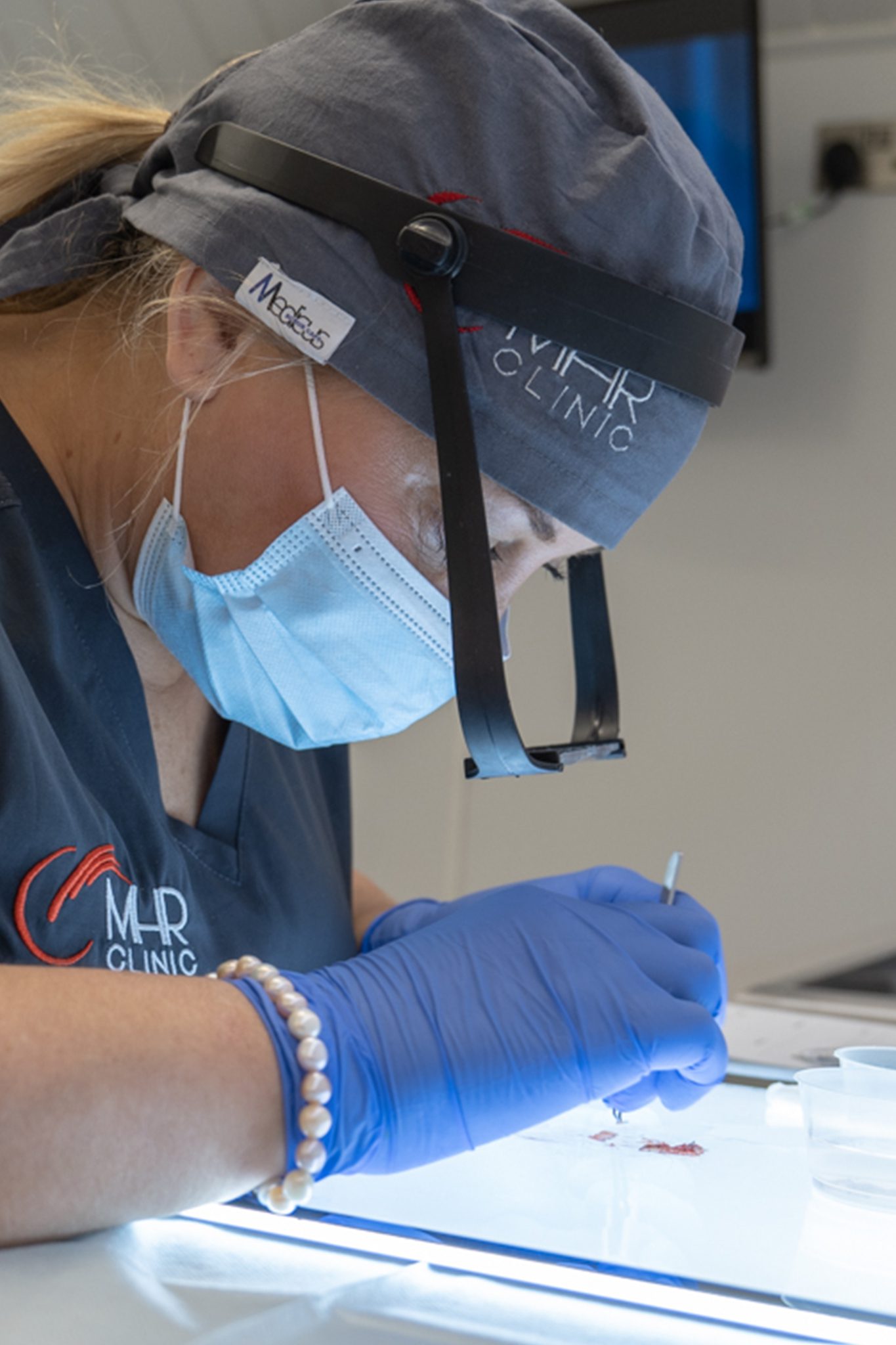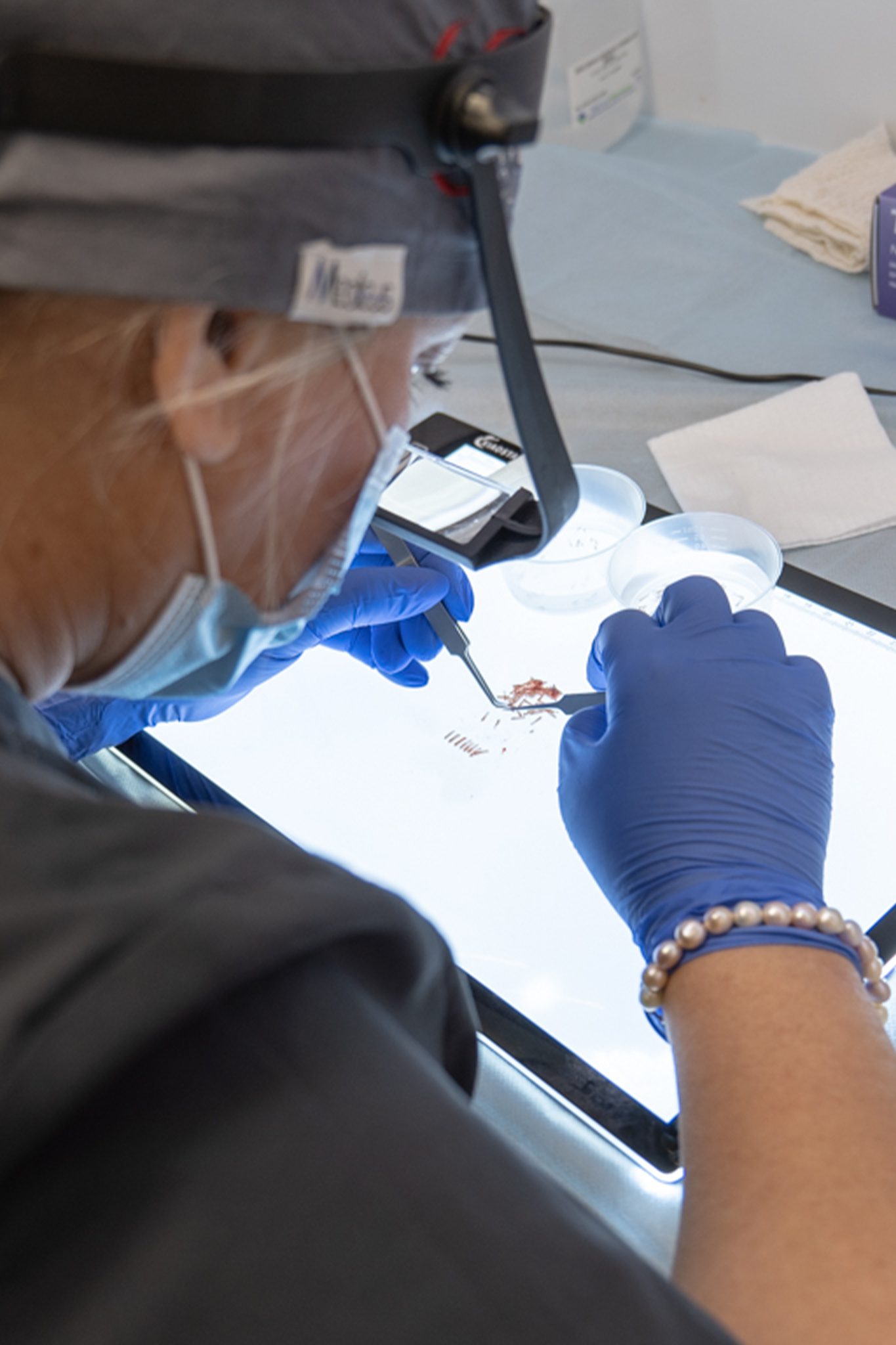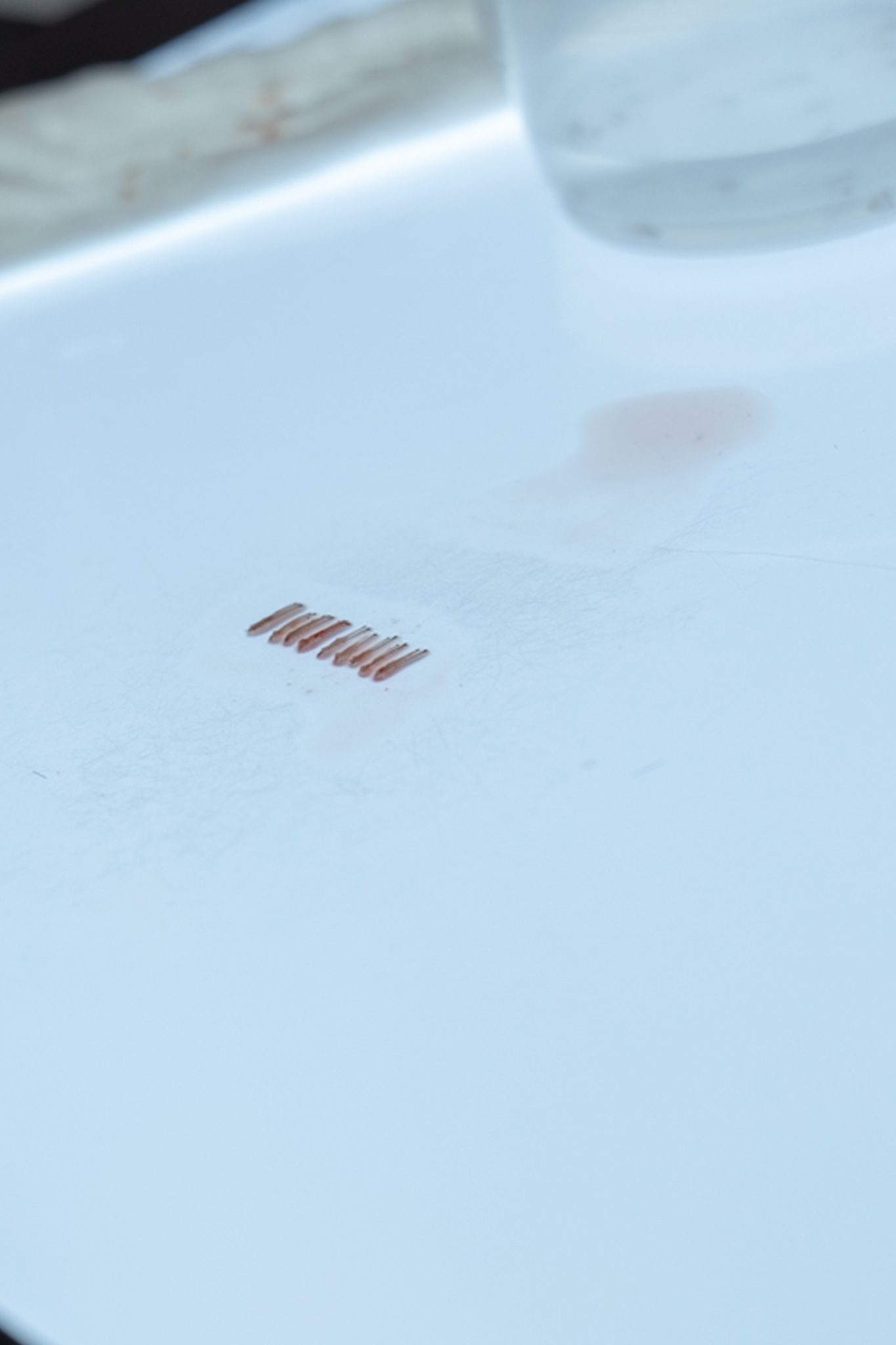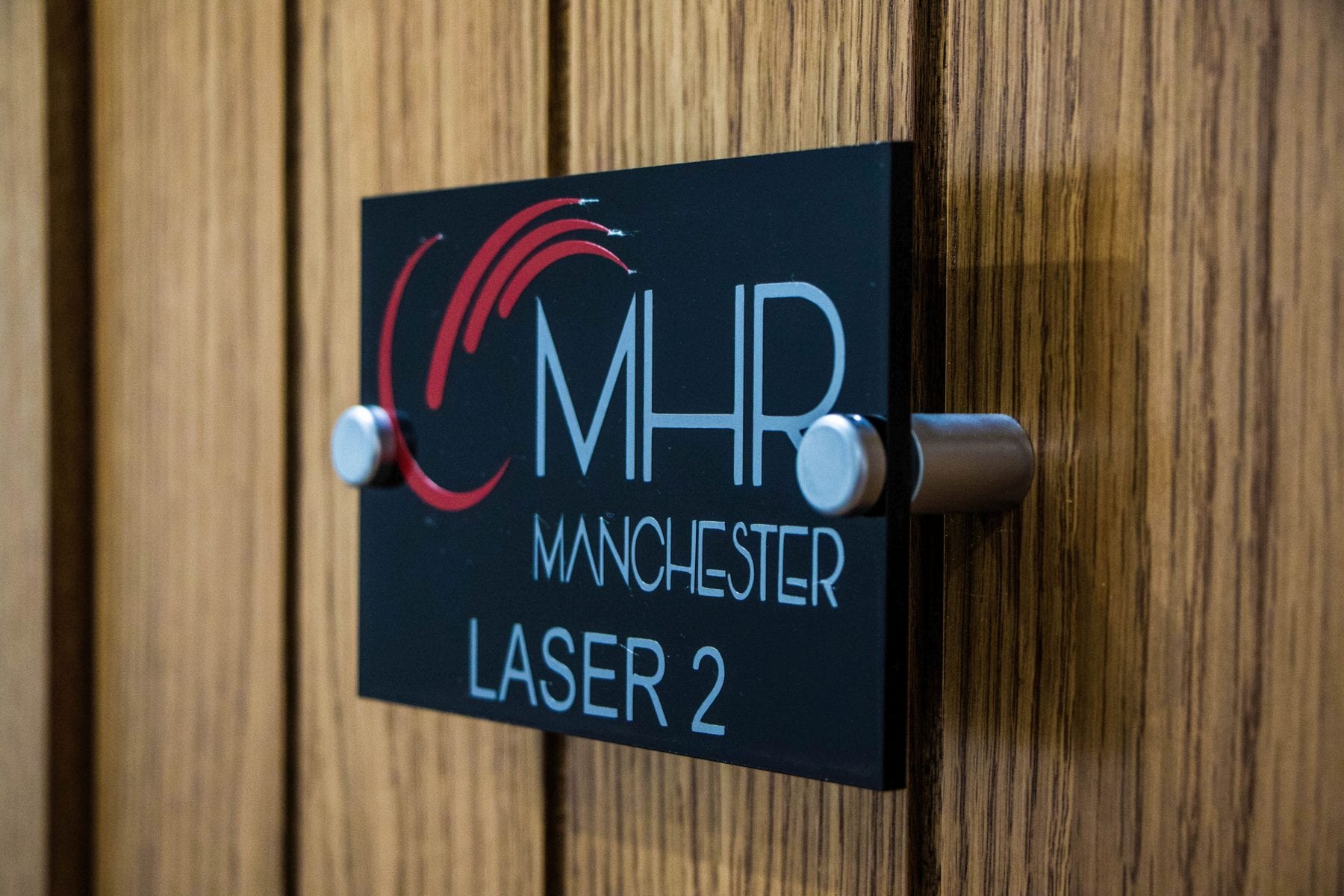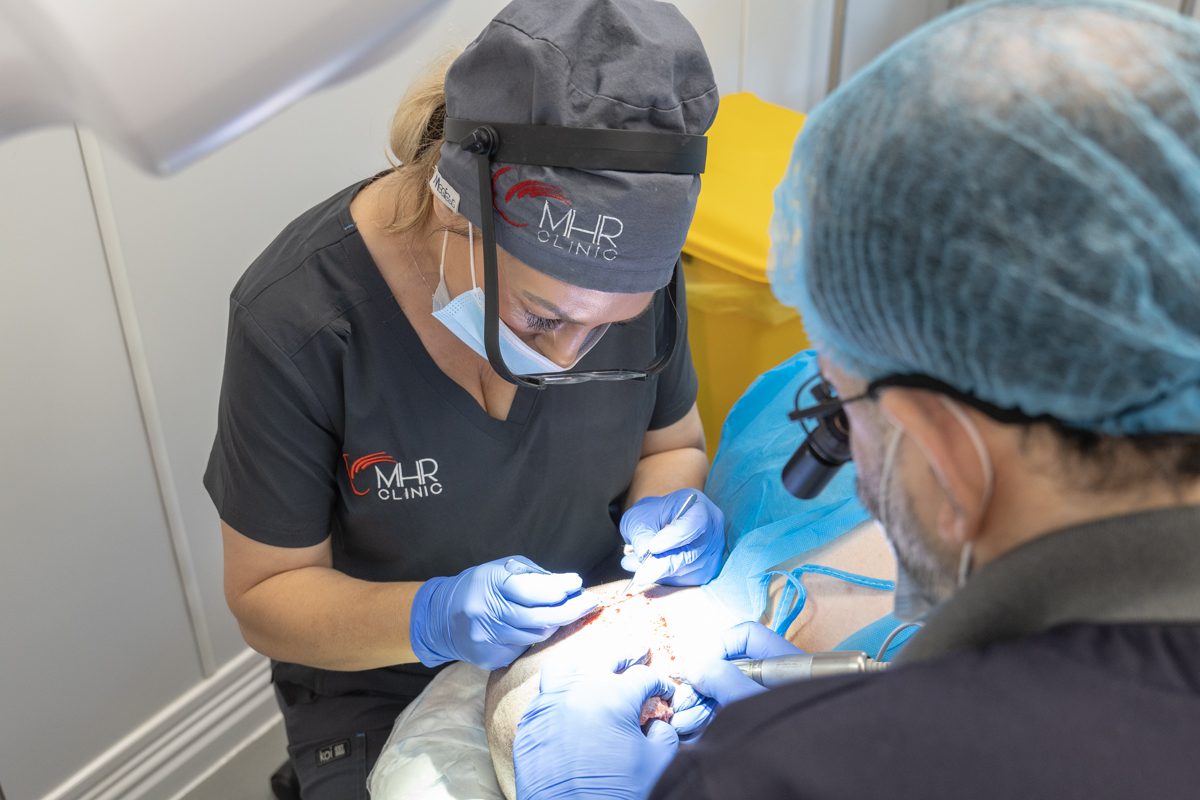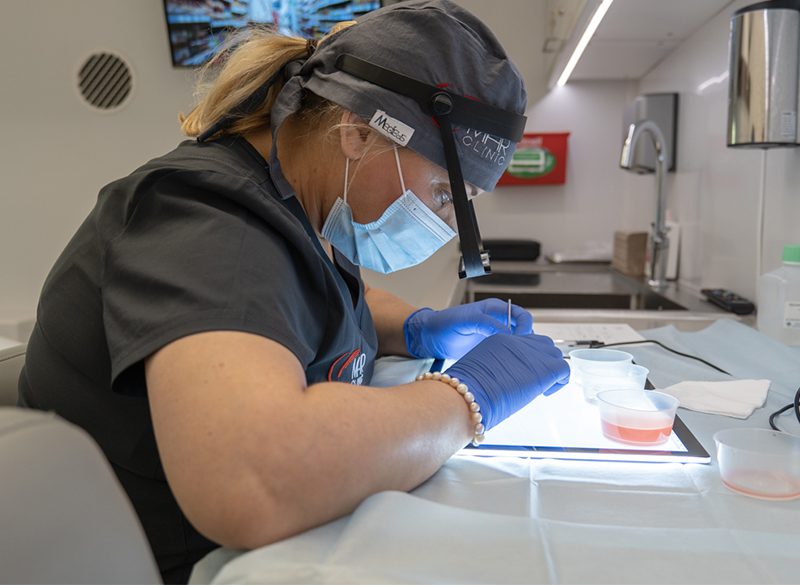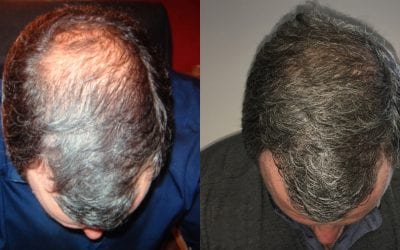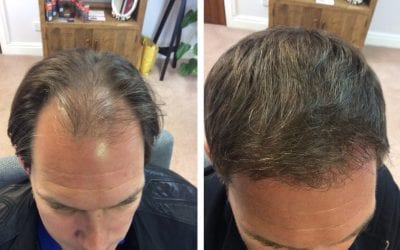Follicular Unit Transplantation (FUT) Hair Transplants
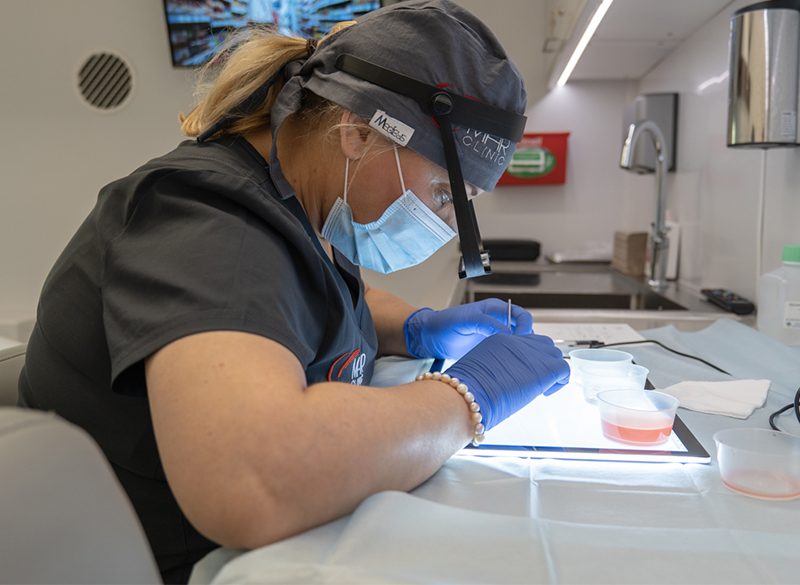
MHR Clinic specialises in Follicular Unit Transplantation (FUT) hair transplants. We guarantee the success of our FUT surgury work, due to the quality and longevity of the results we achieve.
During a FUT surgery procedure, a fine strip of scalp containing multiple hair follicles is removed from the rear of your head. MHR’s technicians divide the strip into small individual grafts under a microscope. Our surgeon embeds them in tiny incisions made in the recipient area of your scalp and matches them to the natural growth of surrounding hair.
BOOK AN FUT HAIR TRANSPLANT CONSULTATION
Benefits of a FUT Hair Transplant Procedure
More follicle transplants per session
FUT promotes a high yield of hairs in the recipient area, giving more fullness to the overall completed look. In one session a FUT surgeon can transfer up to 4000 hair follicles.
Graft Quality

Higher rate of follicle survival
The FUT hair transplant procedure has a high survival rate. Patients with limited hair growth in the donor are often recommended to have a FUT hair transplant.
START YOUR BETTER HAIR JOURNEY
Frequently Asked Questions
Am I eligible for a FUT hair transplant?
FUT procedures are really only applicable to persons with advanced hair loss. For all other circumstances, we advise FUE procedures. We advise against a hair transplant if we believe you are too young or if your donor area is too sparse. We will not perform FUT surgery on haemophiliacs or those suffering from Alopecia Areata.
What are the risks of a FUT hair transplant?
The only risks associated with FUT procedures are those commonly associated with other types of surgery. Excessive bleeding, nerve damage and infection are all possible as a result of the surgery but our surgeon is so well skilled in hair transplantation that these problems are highly unlikely and we have never seen them as a result of her FUT work.
Are there any side effects after the procedure?
In rare cases, some existing hair in the recipient area suffers a syndrome known as shock loss. This happens in reaction to follicles being planted in the scalp. We prescribe medicine to stabilise your recipient area and our surgeons use techniques to minimise shock loss. If shock loss occurs these hairs can still return during the regrowth period.
How much does a transplant cost?
The price of your FUT procedure will be determined by how many grafts you need to have implanted. We’ll have a clearer idea of the final fee once we have conducted a thorough examination of your hair. However, through prescribed medication and laser therapy we can reduce the cost of FUT. This means that MHR’s prices begin from as little as £2000.
Will I have any scarring after my FUT?
FUT procedures produce greater scarring than other types of hair transplant surgery, such as FUE. FUT hair transplants leave a fine linear scar across the rear of your head. It can be disguised by hair but will be more obvious if you choose a short haircut, such as a no.1 or no.2 grade crewcut. In most cases MHR Clinic’s surgeon performs a trychophytic finish to minimise scarring so it is less detectable.
FUT Hair Transplant Procedure
At MHR Clinic, we consider there to be three key stages to a FUT procedure:
Before Your FUT Procedure
Your need for a FUT surgery will be identified in a thorough consultation with our experts at MHR Clinic. They will review your physical health and medical history. A hair assessment will estimate the number of grafts and size of strip needed for a FUT hair transplant.
You will be advised on the amount of prescription medicines, herbal supplements and low level laser therapy recommended to nourish hair in your donor and recipient areas. Your medical programme is likely to be put in place for no less than three months before
MHR Clinic’s surgeon is ready to perform your FUT procedure.

Your medical programme will be halted two weeks in advance of the date of your FUT hair transplant procedure, so your follicles are in their most natural state for transplantation.
You will likely be asked to have a closely-cropped haircut to approximately a no.3 grade, shortly before your procedure. MHR’s surgeon will then be able to divide your follicles into the grafts required to complete your FUT procedure.
Upon arrival for your FUT hair transplant, MHR’s surgeon and technicians will explain the hair transplant procedure and advise you how to increase your comfort during it.
During Your FUT transplant
Your FUT procedure is performed under local anaesthetic and most likely within a single day. An anaesthetist administers a mild sedative and a series of local anaesthetics to your donor area. In each case, time is allowed for these treatments to take effect.
FUT provides a quicker extraction of follicles than FUE. All follicles required for your FUT transplant are removed together while you lie face down. Our surgeons use high magnification and a surgical scalpel. A thin strip of scalp containing thousands of healthy hair roots is placed on a nutrient-rich gel and in cold medical storage.
The donor area is closed with surgical staples or stitches. Our technicians identify and separate your donor follicles into 0.8mm grafts under a microscope. Your recipient area is prepared with a corresponding number of micro incisions.
The implantation period takes up to four hours, depending the number of follicles needed and density of existing hair in your recipient area. The Surgeon selects the best recipient incision for each separated graft. He implants them at the correct depth and angle to suit the natural growth and lie of surrounding hair.
Our Surgeons aim to place your grafts to provide a density of 100 hairs per cm² to ensure the highest possible follicle survival rate. His skill and dexterity also ensures fast recovery and healing periods, so you can return to normal life within days of your FUT hair transplant.
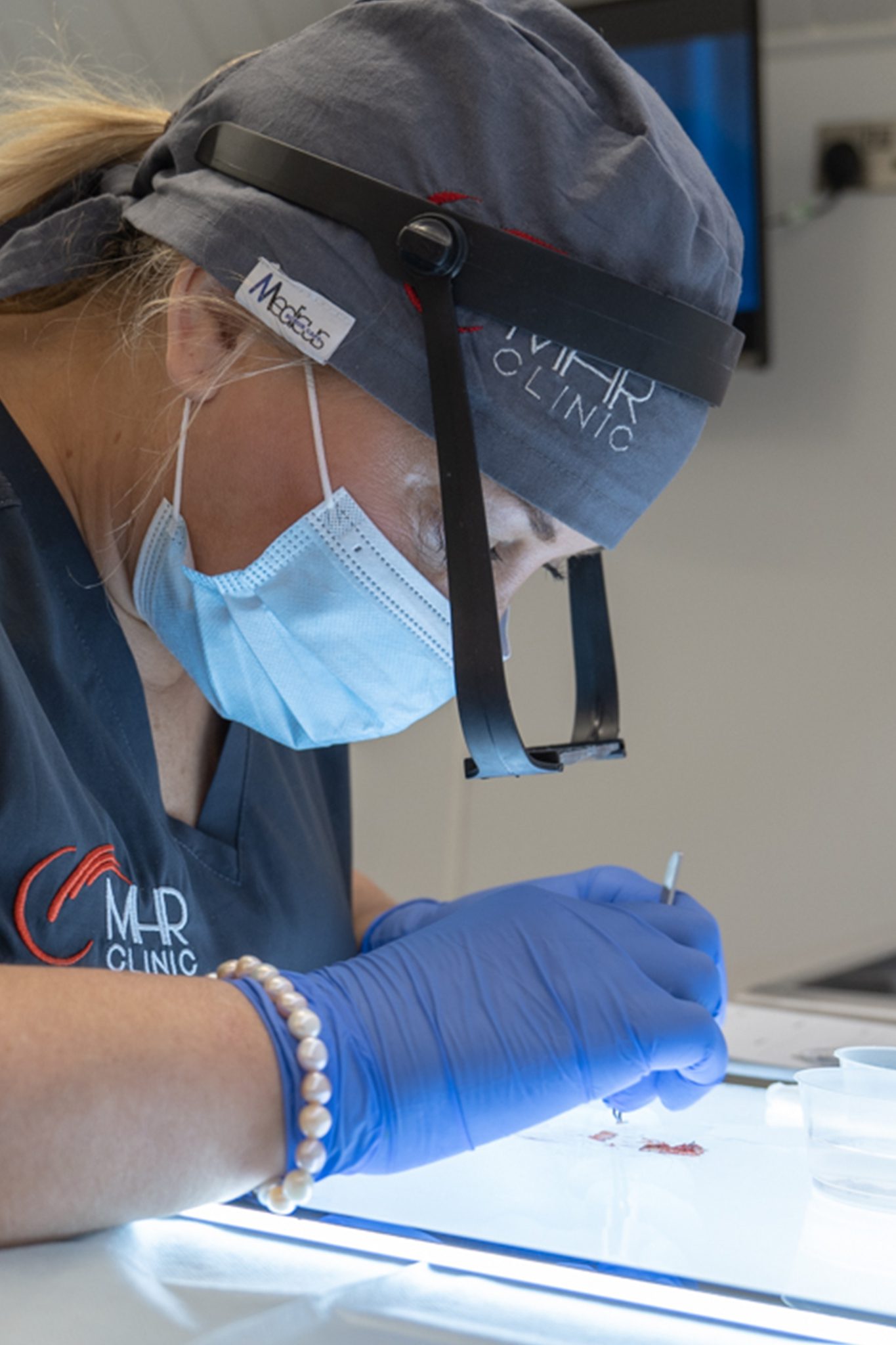
After Your FUT Procedure
After your FUT procedure, you will be shown a short presentation video advising you how to care for your transplanted hair. You should not drive home after your procedure. We recommend you are returned home by a friend, taxi or public transport.
The singular incision made in the rear of your scalp will likely be closed with a trychophytic finish, using staples or stitches. This ensures existing hair grows through and disguises the scar produced from your procedure. Surrounding hair is further used to cover the scar.
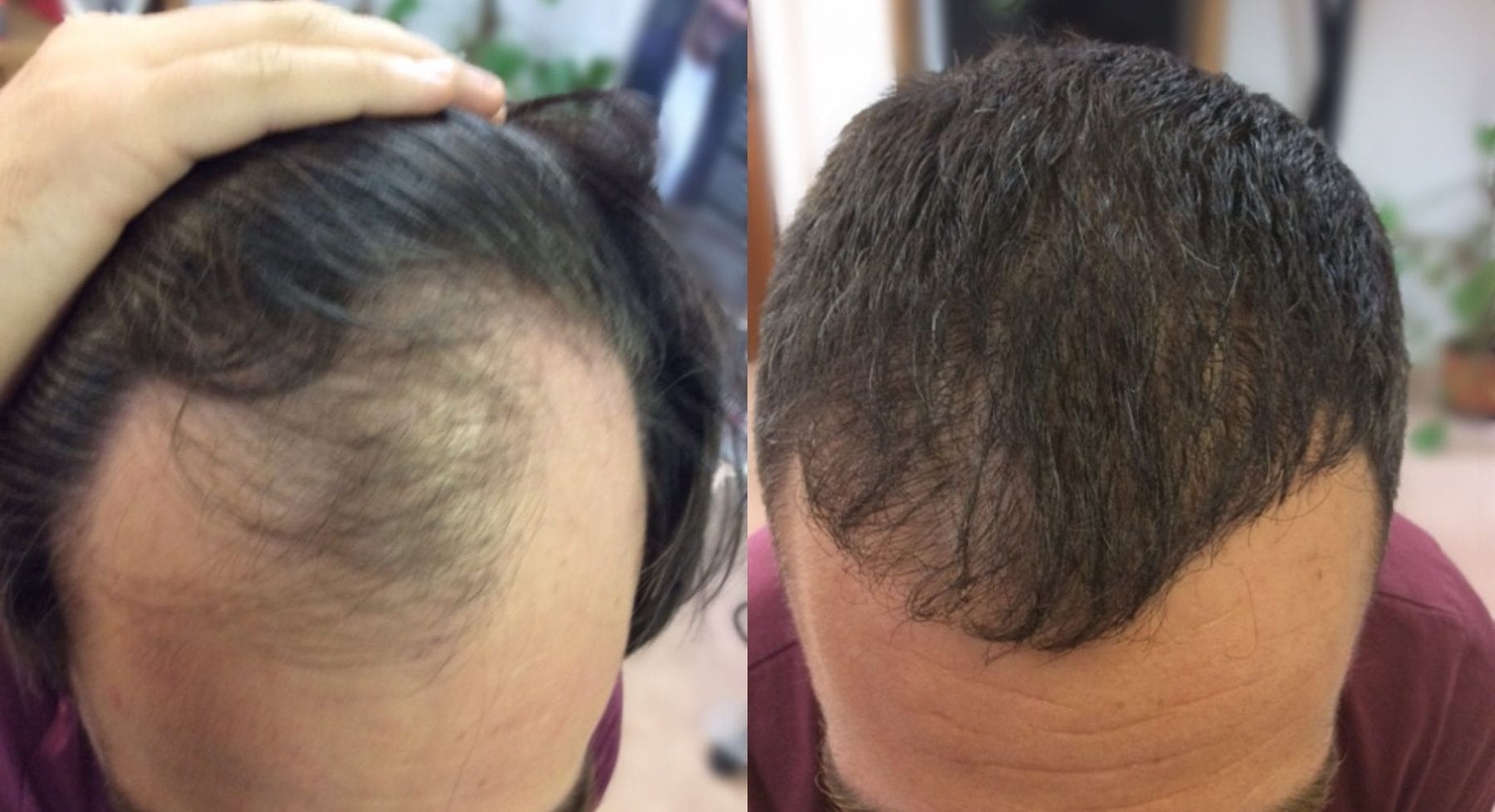
We recommend FUT patients sleep in an upright position for one week, to reduce the risk of trauma to your donor and recipient areas. We advise how to shampoo your hair gently and when to begin doing so. Nutrition advice can also be given.
Swimming, strenuous activity, collision and ball sports must be avoided for two weeks. Light exercise, such as walking, is recommended to maintain adequate blood flow to your scalp.
A dormancy phase, in which transplanted follicles locate their new blood supply, is likely to occur within a month of your procedure. It lasts about five weeks and can result in hair fall which concerns some clients. New hair soon grows.
A significant phase of hair growth occurs between month four and 14 after a FUT procedure. This leads to a dense covering of hair and your final transplant results.
BOOK YOUR FREE CONSULTATION
About Your FUT Surgeon
Our surgeons are among the world’s most experienced practitioners of FUE hair transplant procedures. As Doctors of Medicine, members of the UK’s GMC. They are also an associate member of the International Society of Hair Restoration Surgery (ISHRS) and frequently contribute to its scientific developments and service improvements at its worldwide conferences and congresses.
